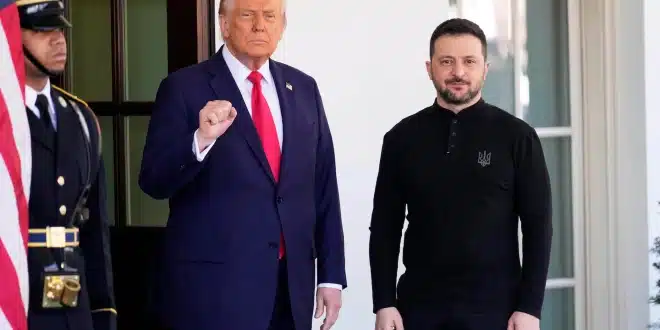Ukrainian President Volodymyr Zelensky will travel to Washington on Monday, August 18, for high-level talks with U.S. President Donald Trump. The visit comes just days after Trump’s summit in Alaska with Russian President Vladimir Putin, which was described by the White House as showing “great progress” but failing to deliver a definitive breakthrough on ending the war in Ukraine.
Zelensky confirmed that the purpose of his trip is to “discuss all of the details regarding ending the killing and the war,” emphasizing that the meeting is critical for advancing peace efforts. He will be joined in Washington by a number of European leaders, highlighting a coordinated transatlantic effort to shape the next phase of diplomacy.
A Call Following the Trump-Putin Summit
After his talks with Putin, Trump immediately briefed Zelensky and several European heads of state in a joint phone call. According to Zelensky, the conversation was “long and substantive,” covering key points of contention and possible paths forward.
While Trump underscored that progress was made in his discussions with Putin, he acknowledged that no final settlement was reached. This set the stage for Monday’s expanded meeting, where Western leaders aim to align their strategies on peace, sanctions, and security guarantees for Ukraine.
European Leaders to Join Washington Talks
A significant group of European leaders will participate in the discussions alongside Trump and Zelensky. Confirmed attendees include:
- UK Prime Minister Keir Starmer
- Italian Prime Minister Giorgia Meloni
- French President Emmanuel Macron
- German Chancellor Friedrich Merz
- Finnish President Alexander Stubb
- European Commission President Ursula von der Leyen
- NATO Secretary General Mark Rutte
Von der Leyen said on X that she will meet Zelensky in Brussels before heading to Washington, noting that she would join the talks “at the request of President Zelensky” as part of the broader “coalition of the willing.”
Downing Street confirmed Starmer’s participation, while Berlin stressed that Chancellor Merz’s visit is intended as “an exchange of information” following Trump’s Alaska talks with Putin. A German government spokesperson added that discussions would cover security guarantees, territorial issues, sanctions, and continued military support for Ukraine.
The French presidency likewise confirmed Macron’s attendance, emphasizing the importance of coordinating European and U.S. positions to reach “a just and lasting peace that safeguards Ukraine’s vital interests and Europe’s security.”
What the Meeting Means
The Washington summit will be closely watched for signs of whether Trump’s approach to peace negotiations can gain traction. For Kyiv, the stakes are high: ensuring continued Western support, preserving territorial integrity, and preventing any concessions that could weaken Ukraine’s long-term security.
European leaders have stressed that any peace deal must not only end active fighting but also provide durable security guarantees to prevent a repeat of Russia’s aggression. NATO’s new Secretary General Mark Rutte is expected to play a key role in framing how collective defense commitments might be extended to Ukraine without formal NATO membership.
With both U.S. and European leaders present, Monday’s meeting could mark a pivotal moment in shaping the diplomatic roadmap for Ukraine. While no immediate breakthrough is expected, the gathering underscores a united Western front at a critical stage of the war.


